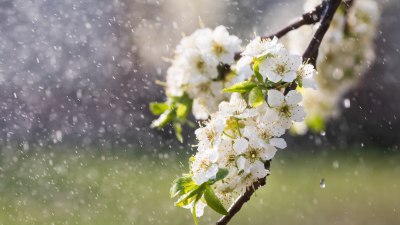The Secret Science of Why S’mores Never Go as Planned
Discover the science behind the s'mores experience and why they often don't turn out as expected.

This image was created with the assistance of Freepik
Everyone loves a good campfire, and nothing quite signifies campfire delight like the classic s’more. The quintessential combination of graham crackers, chocolate, and roasted marshmallows evokes nostalgia and warmth. However, as many enthusiasts will testify, the art of constructing the perfect s'more often eludes us. Despite our best efforts, achieving the ideal balance of chocolatey gooeyness, crispiness, and stickiness feels more like a science experiment gone wrong than a simple snack.
S’mores are not just a treat; they are a cultural phenomenon deeply ingrained in outdoor traditions. Camping trips, beach bonfires, and backyard gatherings wouldn't feel complete without the anticipation of roasting marshmallows and assembling this delectable dessert. The combination of flavors and textures—the crunch of graham crackers, the melty chocolate, and the warm marshmallow—creates a sensory experience that is hard to beat.
The Ingredients at Play
At the heart of every s’more is a trio of simple ingredients: graham crackers, chocolate, and marshmallows. But each of these components has its own quirks that can impact the final product. For instance, the graham cracker's structure can play a significant role in the assembly. A sturdy cracker is essential for holding all the elements together; otherwise, you may end up with a crumble rather than a cohesive treat.
Then there's the chocolate. Different types of chocolate melt at different rates, with milk chocolate melting more quickly compared to dark chocolate. This means that the choice of chocolate can significantly impact how well it integrates with the warm marshmallow. Optimally, you want a chocolate that melts well without becoming overly runny.
Finally, we have the marshmallow. This fluffy ingredient is often where things can go awry. Over-roasting your marshmallow can lead to a fiery disaster, while under-roasting leaves you with a cold interior that's less than desirable. The delicate balance of toasting the marshmallow to achieve the perfect golden brown exterior while keeping it soft and gooey inside is a challenge that many face.
The Science of Roasting Marshmallows
Roasting marshmallows may seem straightforward, but there's a surprising amount of chemistry involved. When a marshmallow is heated, the sugar within begins to caramelize, giving it that distinct flavor. The heat also causes the air inside the marshmallow to expand, leading to the fluffy texture we all enjoy. However, too much heat can burn the exterior, resulting in a bitter taste and undesirable texture.
The optimal roasting method often results from experimentation and personal preference. Some prefer a slow roast over the coals for an even melt, while others might opt for direct flame for a faster result. Understanding the science of heat transfer is crucial to perfecting this step in the s'mores-making process.
The Temperature Conundrum
An important factor that contributes to the unpredictability of s’mores is temperature. The heat from the fire affects the melting point of each ingredient, leading to variations in how they behave together. For instance, the chocolate should ideally melt at around 90°F, but if you're using a very high heat source, it could quickly go past that point and become overly liquidy before the marshmallow has had a chance to soften.
This can lead to the infamous s’mores problem: the chocolate oozes out before you can effectively use it to encapsulate the marshmallow. This spatial relationship between ingredients makes timing critical—too much heat and you face disaster, too little and you have a sad, un-melted s’more.
The Role of Humidity
Weather conditions can also impact your s’mores experience. High humidity can affect the texture and performance of both the graham crackers and marshmallows. A humid environment can make graham crackers less crispy, leading to potential sogginess, which can compromise the structural integrity of your s’mores. Similarly, aim for dry marshmallows; moisture can lead to clumping, making them harder to roast evenly.
Cultural Variations and Innovations
While classic s’mores reign supreme, different cultures have their own variations. In some regions, people use peanut butter cups instead of standard chocolate, introducing a new richness. In others, experimenting with flavored marshmallows or gourmet chocolate bars enhances the experience. These innovations can either elevate or complicate the s’mores-making process, adding layers of complexity and flavor that can lead to even more potential for mishaps.
Common Mistakes
In the quest for the perfect s’more, several common mistakes can lead to disappointment. First on the list is over-roasting the marshmallow. The urge to achieve that perfect char can lead to marshmallow casualties; burnt marshmallows simply don't deliver the intended sweetness. Secondly, the balance of ingredients is critical; overloading on any single element can lead to structural failure. It's important to embrace moderation and work toward the perfect blend.
Another common blunder is impatience. Many people are eager to assemble their s’mores too quickly, which often leads to the chocolate not melting sufficiently. Taking the time to allow all elements to warm can lead to a triumphant treat instead of a disastrous one. Lastly, improper assembly can cause everything to fall apart. Being deliberate about layering the ingredients properly can help keep your s’more intact.
The Perfect Technique
So, what is the secret to crafting the perfect s’more? Start with high-quality ingredients; opt for gourmet chocolate and fresh graham crackers if possible. Position your marshmallow at a safe distance from the flames—this indirect heat allows for a slow and even roast. Rotate the marshmallow slowly to ensure an even glow on all sides without burning it.
Once perfectly roasted, promptly assemble your s’more while the chocolate is warm. Remember to press gently so that the marshmallow compresses appropriately but does not ooze out excessively. A little practice will help you refine your technique and bring you closer to mastering this delicious challenge.
The Joy of Imperfection
Despite the science and the lessons to be learned, part of what makes s’mores special is the joy of imperfection. The shared experience of failing to create the “Instagram-worthy” s’more brings laughter and conversation. Whether your marshmallow caught fire or you ended up with a chocolate spill, these mishaps create cherished memories. So even if your s’mores never go as planned, the moments spent making them are often more valuable than the treat itself.
The secret science of s’mores may reveal an intricate dance of chemistry, temperature, and technique, yet in the end, it showcases something much deeper: the joy of gathering, sharing, and creating simple magical moments. As you gather around your next fire, remember these tips and embrace the chaos of s’more-making. Whether you achieve perfection or hilarity, the memories made will be the highlight of the evening.











